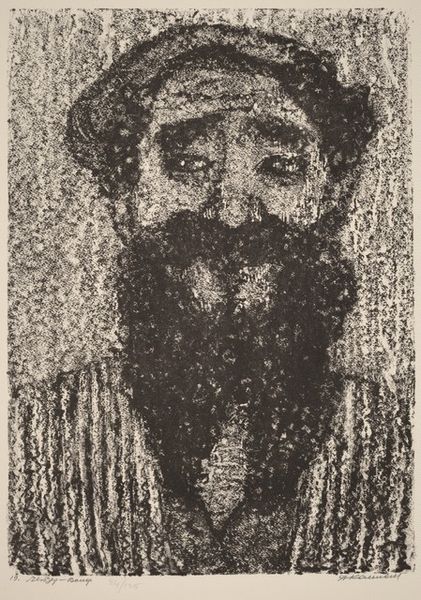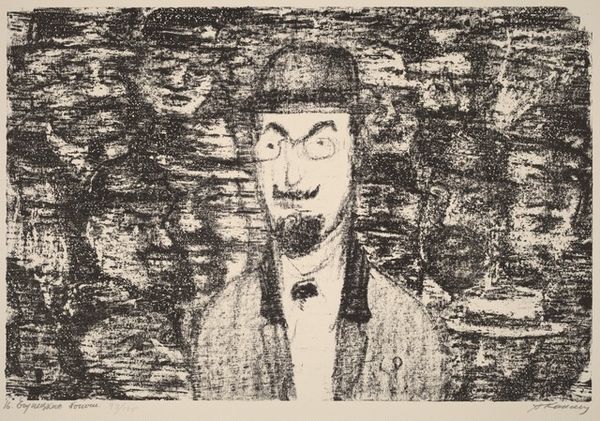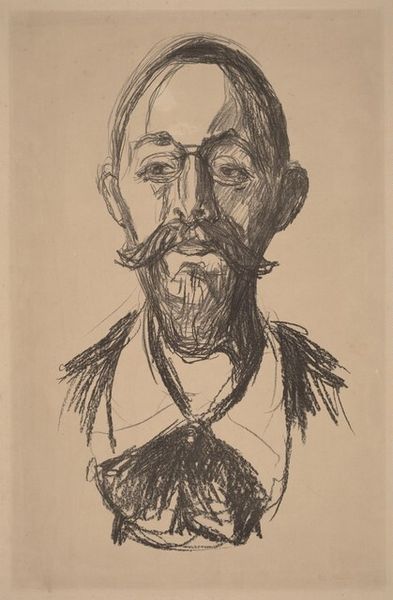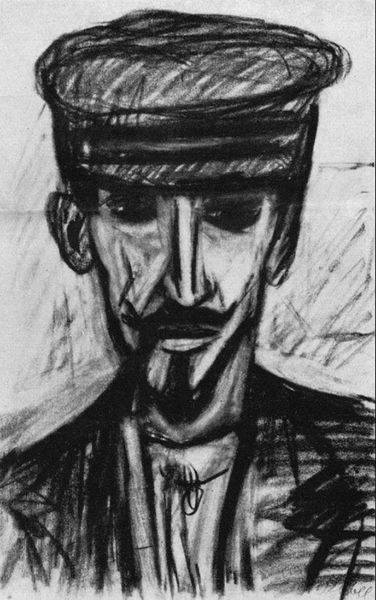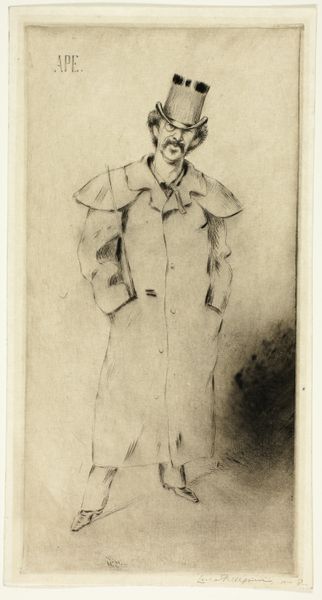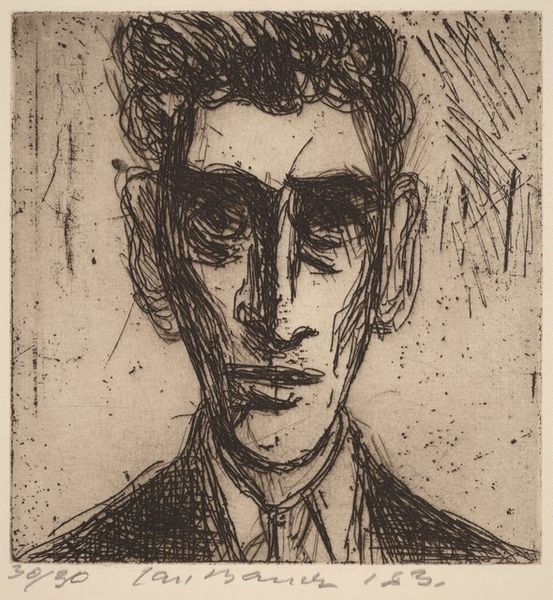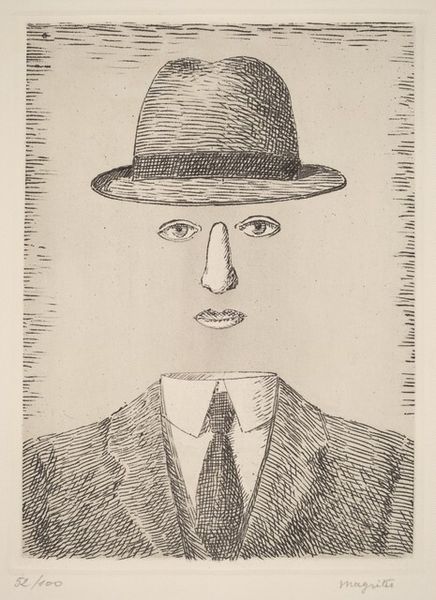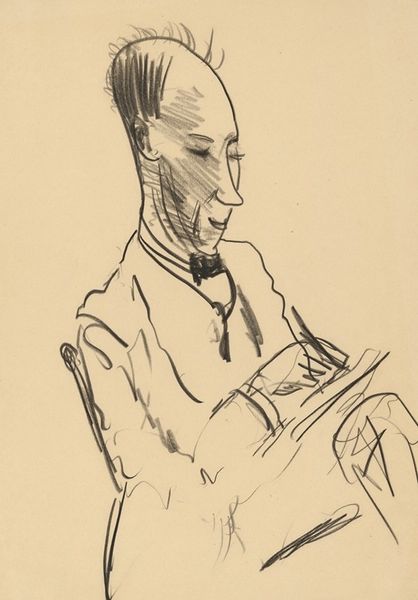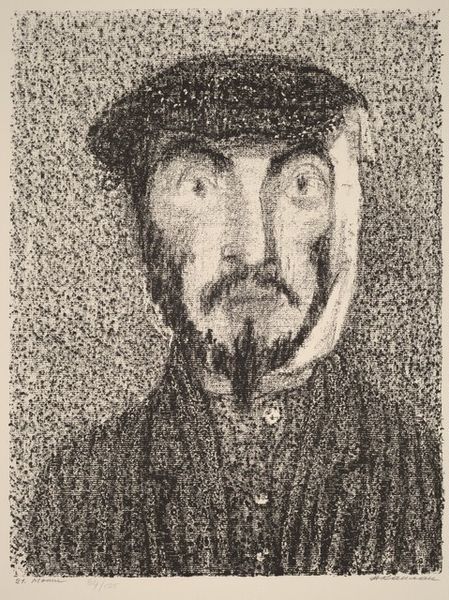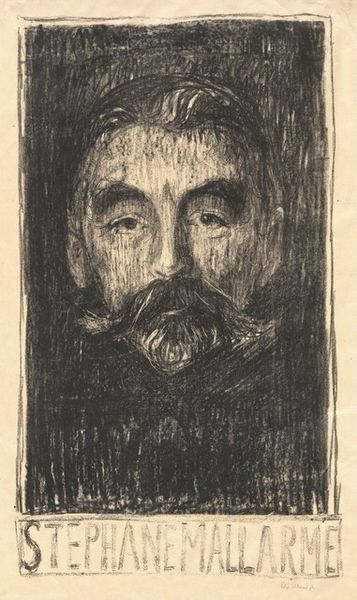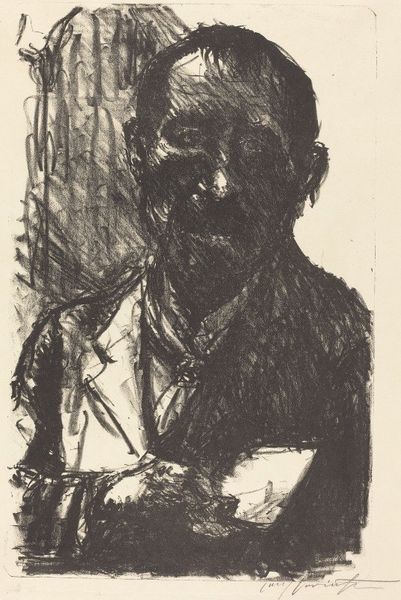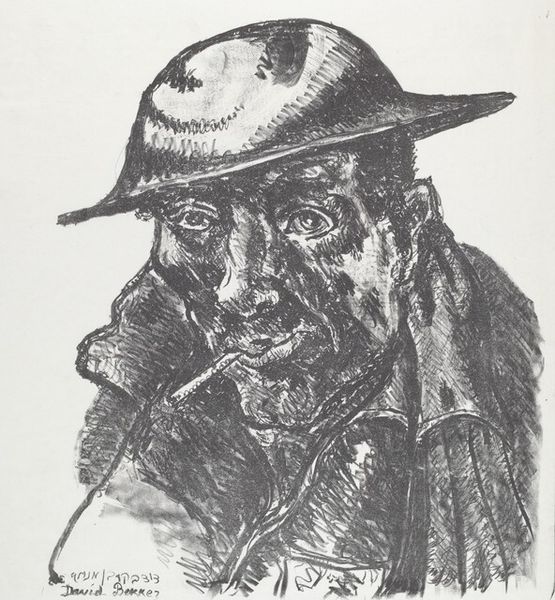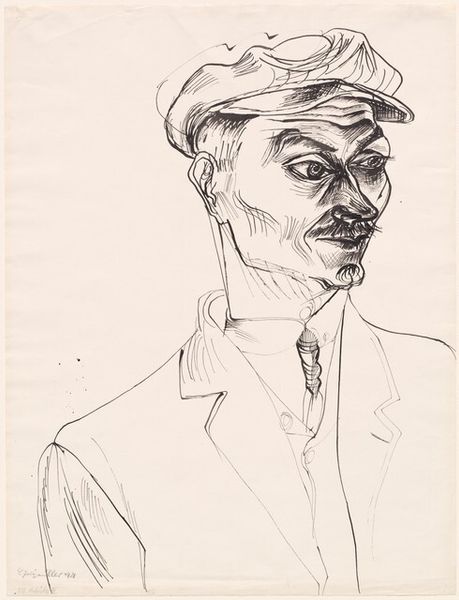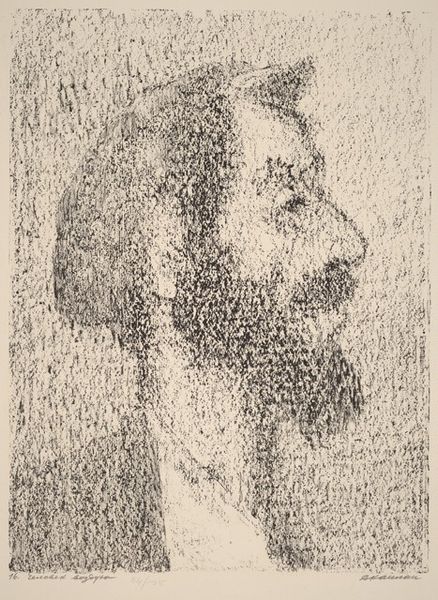
graphic-art, print
#
portrait
#
graphic-art
# print
#
figuration
#
monochrome
Copyright: National Gallery of Art: CC0 1.0
Editor: This is "A Stockbroker" by Anatoli Lvovich Kaplan, made between 1957 and 1961. It's a print, a monochrome portrait in graphic art. There's something almost haunting about it, especially the eyes and the stark black and white. What strikes you when you look at it? Curator: Considering the socio-political backdrop of the Soviet Union at this time, the portrayal of a 'stockbroker' is quite loaded. This work comes across as a stark commentary on capitalism, or perhaps a reflection of the changing societal values subtly creeping into Soviet society. Look at the hat and the tie—signs of Western influence, perhaps even decadence. Editor: So you're saying the title itself is a statement? The image then challenges or reinforces ideas around that? Curator: Precisely. How do you think the Soviet public might have viewed this image? Would it be seen as a critique of a foreign, capitalist archetype, or could it spark a more nuanced understanding of economic roles and their impact on individual identity? Furthermore, Kaplan, who was Jewish, had a very difficult experience with censorship. How does knowing that inform your understanding of the work's possible subversive undertones? Editor: That adds another layer. Knowing he faced censorship, you wonder if the somewhat ambiguous expression is deliberate—avoiding an overly positive or negative portrayal that could be deemed problematic. I originally focused on the aesthetic but now see it’s heavily rooted in context. Curator: Exactly! Understanding the political landscape allows us to move beyond mere appreciation of aesthetics to deciphering social commentary, which gives it meaning. It's a dialogue between the artist, the artwork, and the society that both creates and consumes it. Editor: I'll definitely look at art differently from now on! It's more than just what's on the surface.
Comments
No comments
Be the first to comment and join the conversation on the ultimate creative platform.
